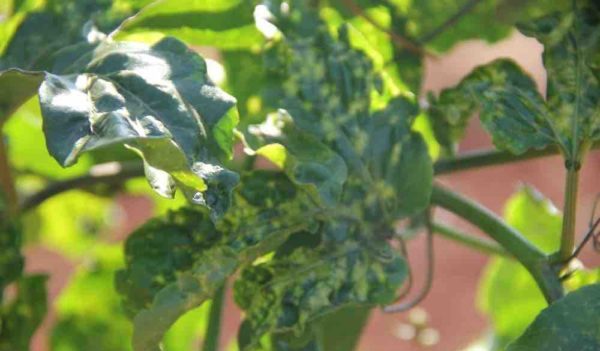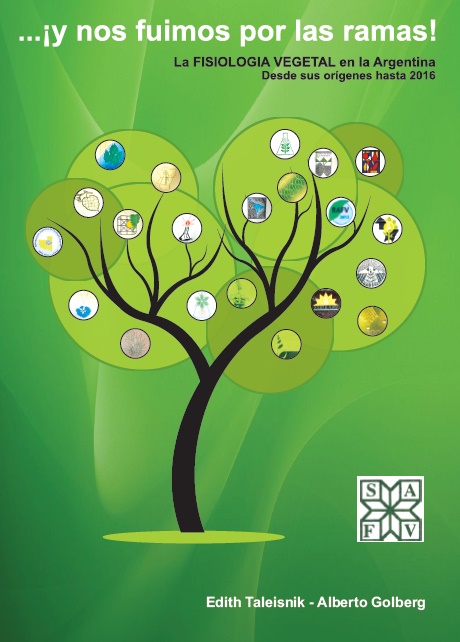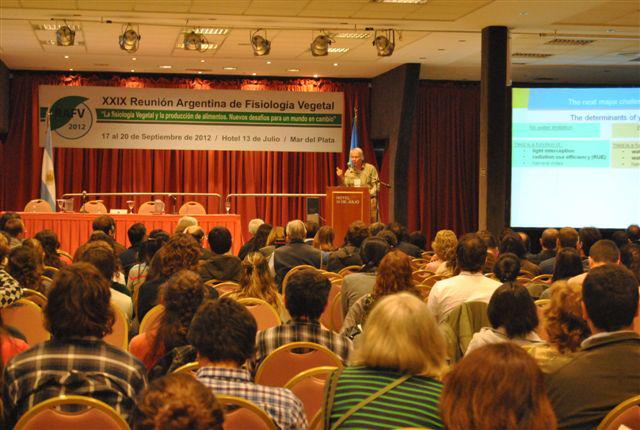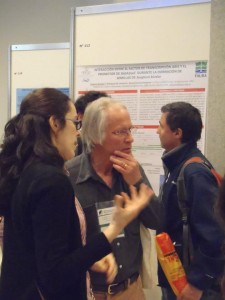
Passion fruit woodiness caused by cowpea aphid-borne mosaic virus (CABMV), the disease that most affects passion fruit (Passiflora edulis) grown in Brazil, can be combated with a relatively simple technique.
A study published in the journal Plant Pathology shows that systematic eradication of plants with symptoms of the disease preserves the crop as a whole and keeps plants producing for at least 25 months.
The technique currently used to combat CABMV entails renewing the entire orchard every year. This is, of course, a costly procedure. According to the authors of the study, economic factors are critical for this crop, which is mostly grown by small producers.
CABMV occurs in all states of Brazil and impairs plant development. Passion fruit woodiness disease causes leaf mosaic, blisters, deformation and reduced fruit size, making the produce unmarketable. Vines are typically eliminated only when the disease is detected in the early stages of their life cycle. The researchers propose systematic roguing – removal of weak, diseased or abnormal plants – throughout the life of the crop.
The study was funded by FAPESP and CAPES, the Brazilian Ministry of Education’s Coordination for the Improvement of Higher Education Personnel. It was conducted by Brazilian researchers affiliated with the University of São Paulo’s Luiz de Queiroz College of Agriculture (ESALQ-USP), the Federal University of São Carlos (UFSCar) at Araras, the University of Southwest Bahia (UESB), and the Semiarid Agriculture Unit of the Brazilian Agricultural Research Corporation (EMBRAPA), as well as colleagues at Argentina’s National Agricultural Technology Institute (INTA).
“Roguing is a technique that has been used to combat papaya disease in Espírito Santo state since the 1980s. After several experiments, it was found to be the best way to control papaya ringspot virus type P [PRSV-P],” said Jorge Alberto Marques Rezende, Full Professor at ESALQ-USP and principal investigator for the study, which began in 2010.
CABMV is transmitted by aphid saliva and spreads throughout an orchard in a few months. The aphid species in question do not colonize the plants but merely visit them, and insecticide is not effective for control purposes.
“Insecticide affects their nervous system but takes hours to kill them. Meanwhile, they’re stimulated to feed on more plants, spreading the virus farther, so insecticide helps propagate the disease instead of controlling it,” said David Marques de Almeida Spadotti, first author of the article. The research was part of Spadotti’s postdoctoral fellowship at ESALQ-USP.
In previous experiments, the use of transgenic passion fruit plants and inoculation with attenuated variants of CABMV as a kind of vaccine also failed to control the disease. In this new study, an experimental orchard was planted in three areas belonging to ESALQ-USP in Piracicaba, São Paulo state, and two areas in Vitória da Conquista, southwestern Bahia. The experiments took place between 2013 and 2018. Approximately 100 healthy seedlings were planted in two areas of each city using trellises or T-shaped arbors connected by wires.
The vines were trained on the trellises and arbors for support but also to separate them so that the disease could easily be observed. Any buds with symptoms were identified and removed in weekly inspections.
In two other areas distant from the others, the same number of vines were planted using trellises and allowed to interlace without roguing, as in commercial plantations. The results of the two strategies were then compared.
In the absence of roguing, the virus spread throughout the crop in 120 days. In the areas submitted to systematic roguing, 8% of the vines were infected and removed after 180 days. In Piracicaba, only 16% had to be removed after 25 months, and the plants remained productive throughout this period.
The presence of CABMV in all infected or preventively removed vines was confirmed by PTA-ELISA serological testing.
“The symptoms appear eight days after inoculation of the virus on average. Roguing enables the grower to identify diseased plants visually and base control on visual inspection. Inspection should ideally be carried out at least once a week”
Spadotti said.
Cultural change
According to the researchers, the next step in the study entails larger pilot plantings of 1,000-2,000 passion fruit vines. In addition to eradicating diseased plants, they plan to replace them with healthy plants. The idea is to maintain the orchard for three to four years and compare it with another orchard maintained in the conventional manner, in which all plants are replaced every year.
“Because passion fruit is semiperennial, this longer production period is more advantageous from an economic standpoint than complete annual substitution,” said Rezende, principal investigator for the Thematic Project “Begomovirus and Crinivirus in Solanaceae”, which also relates to viruses in food crops.
The researchers stress, however, that if the strategy is to succeed, it should be implemented by all passion fruit growers in any given region. In addition to other plantations, the virus can spread from old or abandoned orchards, which should be eliminated.
CABMV-susceptible wild species of passion fruit in forests near plantations may also spread the disease. One of the experimental areas in Vitória da Conquista failed for this reason. When the wild plants were eliminated, the incidence of CABMV was considerably reduced.
According to IBGE, the national statistics and census bureau, Brazil is the world’s leading grower of passion fruit, with more than 550,000 metric tons produced in 2017.
Read the paper: Plant Pathology
Article source: Agência FAPESP
Author: André Julião
Image: Jorge Rezende











